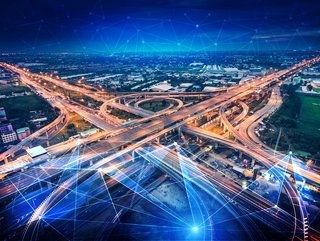AI-powered cloud platform to help improve bus journeys

AI-powered technology is set to make public transport faster and more reliable through the use of machine learning (ML) and utilising the benefits of the cloud.
Alchera Data Technologies this week announced the completion of a trial of its Pinch Point Analysis Tool (PPAT) across 59 junctions of East Lancashire in the north of England. The tool is a software-based ML application that it says identifies and helps to lessen the impact of bus pinch points on the network, ultimately making buses faster and more reliable.
Tony Brown, Technical Director at Atkins, said: “Alchera has not only given us the insight to understand where the problems are across the network but also to understand the economic impact of those delays.”
In addition to simply looking at delays and consistency across the network, PPAT can estimate the economic impact inefficient junctions are having on the wider community as well as the environmental impact from increased emissions while idling at signals.
Using mobile data and AI to give real-time movement data
Alchera specialises in enabling transport network operators to maximise the operational and commercial value of fragmented mobility data to make better data-driven decisions. Using its cloud-based, proprietary AI software platform ‘Alpha’, Alchera unlocks data-driven decision-making across council transport and mobility operations, giving absolute, real-time and predicted data on vehicle and pedestrian movements around cities and major infrastructure.
Alchera’s Pinch-Point Analysis Tool fuses data from several sources including the Bus Open Data System (BODS) and existing transport sensors to analyse the impact each junction has on the average speed of buses on individual routes as well as the observed impact on the consistency of the bus schedules moving through intersections. The analysed data can then be used for various useful tasks such as identifying high-priority junctions that need interventions, enabling data-driven decisions and providing much-needed objective data to support applications for road improvement funding.
The aim is to create services that are more frequent, reliable and affordable while making them easier for passengers to understand and use.
AI tool can identify inefficient routes
Developments in AI mean technology can be used to improve the reliability of public transport networks. Hitachi rolled out new technology across the city of Genoa in Italy earlier this year to make its public transport network smarter, more predictable and more attractive to the masses.
Hailing the service as a “world first for smart mobility”, the company said it could improve urban transport in other cities around the world.
And in Germany, a study developed by a team from the Martin Luther University Halle-Wittenberg, the Fraunhofer Institute for Industrial Mathematics and the University of Kaiserslautern meant AI could be used to test bus timetables’ robustness very accurately within milliseconds: which can be used to minimise delays for passengers.
Anna Jordan, co-founder at Alchera, said: “When you are trying to deal with complex, congested cities, reacting to situations in real-time is key. Our largest system integration combines thousands of sensor sources and performs hundreds of thousands of measurements every day. This represents the only demonstration of absolute, real-time traffic counts and classifications, at a city scale, in the UK today. Data in the system is handled in a fully transparent and auditable way - recognising that data ownership and usage will be critical in future smart cities.”
Martin Porter, Principal Engineer (Network Management) at Lancashire County Council, said the ability to use objective data is crucial to secure funding from the UK Government and make improvements. “We also need to be able to measure the interventions to see how well they are working and avoid similar issues in the future. Alchera gives us the capability to do that in real-time,” he added.






